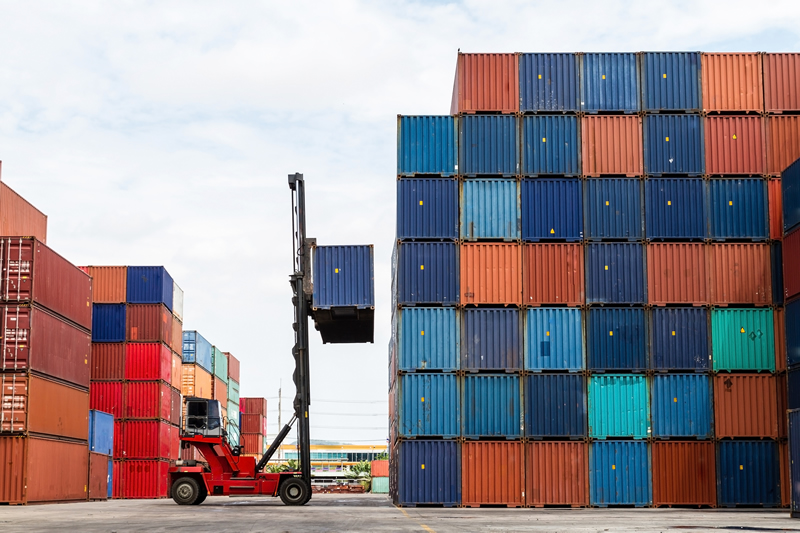5% Scalable Zero Emission Fuel (SZEF) Use By 2030 Progress Report
11
A recent analysis has revealed that the world is falling short of its goal to have zero-emission fuels represent 5% of international shipping fuels by 2030. This poses a significant challenge to the shipping industry's 2050 decarbonisation objective. Earlier efforts had proposed a crucial milestone known as the "2030 Breakthrough," aiming to achieve at least 5% utilisation of scalable zero emission fuel (SZEF) by 2030. This milestone was endorsed and further refined in the 2023 International Maritime Organization (IMO) GHG Strategy, which now aspires to reach "5%, with an aspiration for 10% utilisation of zero and near-zero GHG emission fuels by 2030" as a portion of the overall energy consumption in international shipping.

The assessment was introduced at the recent annual summit of the Global Maritime Forum. This disclosed that the current production of scalable zero-emissions fuel (SZEF) in the pipeline would only satisfy a quarter of the required fuel by 2030. The Global Maritime Forum, a non-profit international organisation serving the global maritime sector, brings together leaders from the maritime industry, policymakers, experts, NGO's, and other influential decision-makers.
Furthermore, the progress in delivering zero-emission vessels is also falling short of expectations. By the end of 2022, there were 24 ships capable of operating on SZEF, primarily methanol, with an additional 144 on order. However, the report, conducted by the UMAS consultancy, which includes experts from the University College London Energy Institute, finds that the current orders are only one-fifth of what is necessary to meet mid-term targets.
Kathryn Palmer, the shipping lead of the UN COP Climate Champions, emphasised that the current progress is insufficient in terms of scale and pace, stating, "We need to see demand and supply actors collaborate to implement specific solutions." It is worth noting that global shipping is responsible for approximately 3% of the world's greenhouse gas emissions stemming from human activities. In response to this, the International Maritime Organisation revised its greenhouse gas strategy this year, endorsing the 5% target while also encouraging the industry to strive for achieving 10% zero-emission energy in international shipping fuels by the end of the decade.
Meeting the demand for 5 to 10% of shipping fuel in 2030 would require about 5.3 million metric tons of hydrogen, 29.8 million metric tons of ammonia, or 28.1 million metric tons of methanol. It is estimated that the industry will need to invest approximately $40 billion annually in SZEF bunkering and production.
The Getting to Zero Coalition, a collaborative effort between the Global Maritime Forum and the World Economic Forum, was initiated at the United Nations Climate Change Conference in New York in 2019. This coalition brings together around 200 stakeholders from the shipping and fuels value chain. Its primary objective is to have economically viable Zero Emission Vessels operating on deep sea trade routes by 2030, supported by the necessary infrastructure for scalable zero-carbon energy sources, including production, distribution, storage, and bunkering.
The ultimate vision of the Getting to Zero Coalition is to achieve complete decarbonization of global shipping by 2050. In 2021, the Call to Action initiative was developed, involving more than 150 industry leaders and organisations, to urge governments and the global shipping industry to commit to full decarbonization of international shipping by 2050.
The key conclusion of the Global Maritime Forum report was stated as "Overall progress to reach the 5% by 2030 SZEF goal can be considered to have remained partially on track from last year. The past 12 months have seen significant developments in terms of international commitments at the IMO, national policy developments, industry announcements, and technological developments. However, in order to reach the 5% goal, significant progress remains necessary, especially in terms of concrete national policies turning the IMO’s level of ambition into specific economic and technical measures. There is also a need to turn growing appetite for zero carbon freight into concrete demand on the orderbook for SZEF vessels which can send the right signals to SZEF suppliers. The strong technological progress observed in recent years must continue to be capitalised on to ensure sufficient supply of SZEF in 2030, both in terms of expanding the announced pipeline of production and ensuring a sufficient proportion of announced capacity passes the final investment decision stage."
#protea #emissions #monitoring #cems #ftir #gas #analysers #shipping #marine
Other Articles
Global Underground CO2 Storage Data Offers Hope Amid Rising Emissions
01
IMO Postpones Adoption Of Global Net-Zero Shipping Framework
04
Pioneering Carbon Capture Projects Ready For Construction
03
Methanol & Ammonia Deemed Ready As Zero-Emission Shipping Fuels
01
Carbon Capture Storage Reaching A Turning Point In Decarbonisation
13
CCS To Capture 15% Of Shipboard Carbon Emissions By 2050
29
Global Shipping Industry Struggles To Navigate Net Zero Transition
21
Carbon Capture Surges as Economics Policy & Industry Demand Align
14
GHG Emissions At Ports On The Rise Despite Initiatives
07
Carbon Capture Utilisation & Storage In A Nutshell
30